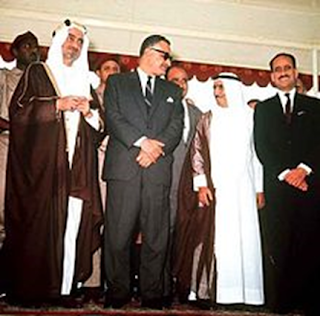Azerbaijan Wages Cultural Genocide on Armenian Sites
In the region of Djulfa, located in the Azerbaijani enclave of Nakhichevan, on the banks of the Araxes River, sat the largest Armenian cemetery in the world. At its height, the graveyard consisted 10,000 kchackars (cross stones), the earliest dating back to the 6th century. In the 16th century, the Persian Empire forced the Armenian Community to leave the region, but the kchackars remained. Unfortunately, natural disasters and ongoing armed conflict decimated the site to the point when the Soviet Union officially took over the region in 1920, fewer than 3,000 kchackars remained. This led the UNESCO in 2000 to pass a resolution calling for the cross stones to be preserved. Tragically, the nation of Azerbaijan not only ignored this order, they had their soldiers deliberately destroy the remaining kchackars (The New Tears of Araxes) and dump the crushed remains into the Araxes River.
During the Armenian Genocide 100 years earlier, the Turkish killers often dumped the bodies of slaughtered Armenians into the Tigris River. Some witnesses attest that so many were dumped there that for a time the water of the River ran red, soaked by the blood of the Armenians. Now, what remains of their presence in this land is being destroyed, and like the Armenian people, are being dumped into the rivers, to be washed away without a trace. Local researcher Argam Ayvazyan has collected evidence to show that from 1964-1987, 89 Armenian Churches, 5,840 kchackars, and over 22,000 Armenian tombstones have been destroyed in the region. Azerbaijan's who object to this deliberate destruction of history, such as writer Akram Aylisli, have been harshly persecuted and forcibly silenced by the Azerbaijan government. Much like the nation of Turkey, the nation of Azerbaijan is not only denying international inspectors the right to investigate, they are trying to eradicate all Armenian presence in the region and deny that they were ever there.
What the Azerbaijani soldiers have done is eerily similar other notorious cultural genocides carried out by other Jihadist groups across the world. After the 1948 Israeli War of Independence, Jordanian Forces destroyed the Jewish Quarter of Jerusalem and deliberately desecrated the ancient Jewish Cemetery on the Mount of Olives.
What the Azerbaijani soldiers have done is eerily similar other notorious cultural genocides carried out by other Jihadist groups across the world. After the 1948 Israeli War of Independence, Jordanian Forces destroyed the Jewish Quarter of Jerusalem and deliberately desecrated the ancient Jewish Cemetery on the Mount of Olives.
In March of 2001. the Taliban deliberately destroyed two giant 6th century statues of Buddha in the Bamyan Valley of Afghanistan. ISIS like wise attacked many church, Yazidi temples, and other sites of Religious and Cultural Value across the region of Syria and Iraq. The most notorious example was their destruction of the Tomb of Jonah, a site considered holy to Jews, Christians, and Muslims. This deliberate destruction of history has long been a tactic used by Jihadists who seek to destroy all the presence of the previous civilizations and remake the land they conquer into what they want it to be, to show that they land they take is theirs alone and nobody will ever be able to make claim to it.
Sources:
Balakian, Peter. The Burning Tigris. New York: Perenniah, 2003.
Gold, Dore. The Fight for Jerusalem. Washington
D.C.: Regnery Publishing Inc., 2007.
Sawa, Dale Berning. "Monumental Loss: 'Azerbaijan and 'the worst cultural genocide of the 21st century.'" The Guardian. March 1, 2019. Accessed from https://www.theguardian.com/artanddesign/2019/mar/01/monumental-loss-azerbaijan-cultural-genocide-khachkars.
Womack, Catherine. "Historic Armenian Monuments were Obliterated. Some Call it Cultural Genocide." The Los Angeles Times. Nov. 07, 2019. Accessed from https://www.latimes.com/entertainment-arts/story/2019-11-07/armenian-monuments-azerbaijan.





Comments
Post a Comment